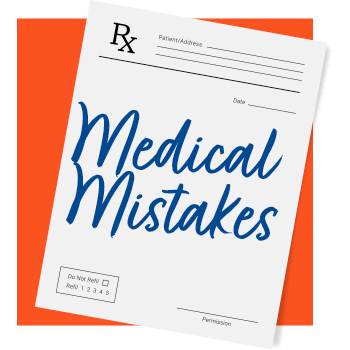
If you or a loved one has suffered due to a doctor failing to diagnose a medical condition, or misdiagnosing one entirely, you may be wondering if you have grounds for a medical malpractice lawsuit. Even highly experienced and competent doctors make diagnostic errors, however misdiagnosis on its own is not necessarily medical malpractice, and not all diagnostic errors result in a successful lawsuit.
So how do you know if your case warrants a lawsuit and, if so, what you can expect? Keep reading for an in-depth look at the facts surrounding your medical misdiagnosis case.
What Is Medical Misdiagnosis, and How Does It Happen?
Medical misdiagnosis is the lack of a correct diagnosis, usually leading to incorrect treatment, or none at all. An example of this is a woman who is sent to a gastroenterologist for stomach symptoms but her actual condition is ovarian cancer — which requires a gynecologic oncologist as well as a very different treatment plan. There are several ways that physicians and other medical professionals can make diagnostic mistakes.
- Wrong diagnosis. This occurs when a doctor determines the incorrect illness from their differential diagnostic list (more on that below).
- Missed diagnosis. Here, a physician determines that a patient has a clean bill of health when the patient is actually sick or injured.
- Delayed diagnosis. This occurs when a doctor makes the correct diagnosis, but only after a significant amount of time has passed. In the meantime, the patient’s condition may have worsened.
- Failure to recognize complications. In this case, a physician makes the correct diagnosis but fails to identify complications that change or aggravate the condition or illness.
- Failure to diagnose a related disease. This occurs when a doctor gives a correct diagnosis for one condition or illness but fails to diagnose a related disease that has a higher risk of incidence in patients with the primary disease.
What Do You Need to Prove in a Failure to Diagnose Case?
In a medical malpractice case based on diagnostic error, the patient must prove that a doctor in a similar specialty, under similar circumstances, would not have misdiagnosed the patient’s illness or condition. This is done by proving these factors:
- A doctor-patient relationship existed.
- The doctor was negligent. Medical negligence occurs when a doctor or healthcare professional violates the acceptable standards of care in their profession. Because a medical malpractice lawsuit requires this, you will need to secure an expert opinion to determine whether or not the doctor lived up to the standard of care.One of the issues the expert will investigate is the doctor’s differential diagnosis method. This refers to the list of diagnoses a physician makes when trying to determine a patient’s illness or condition. The doctor will order the potential diagnoses by probability and test each by asking the patient questions, making further observations or ordering labs. The goal of the differential diagnosis method is to rule out diagnoses until only one remains. When determining negligence, one of two things will need to be proved:
- The doctor did not include the correct diagnosis on the differential diagnosis list, yet another skilled, competent doctor under similar circumstances would have.
- The doctor included the correct diagnosis on the differential diagnosis list, but failed to administer appropriate tests or seek opinions from specialists in order to confirm the diagnosis.
- The doctor’s negligence caused actual injury or harm to the patient. Proving causality between the doctor’s misdiagnosis and the patient’s injury or harm is the most challenging factor in a medical malpractice case. A patient must be able to prove that the misdiagnosis caused the injury or condition to progress beyond where it normally would have in the case of a correct diagnosis — and that this progression had a negative impact upon treatment. For example, an individual who is misdiagnosed could unnecessarily receive a risky treatment or surgery that is not appropriate for his or her actual condition, causing their health to worsen.
How Are Medical Malpractice Cases Resolved?
There are a couple of reasons why filing a medical malpractice lawsuit is so complicated. First, a medical malpractice case requires various types of proof from trusted experts. Second, in these types of cases, the law will most often side with the doctor rather than the patient. However, when you partner with a medical malpractice lawyer who has a background in these very specific cases, you’re putting yourself in the best position for a successful outcome.
Most medical malpractice cases are solved when a medical personal injury lawyer settles with an insurance company out of court. However, if fair compensation cannot be reached this way, that lawyer will take your case to court and advocate aggressively on your behalf, fighting for recovery of your economic damages (medical expenses, loss of income) as well as your non-economic damages (emotional distress and suffering).
A Medical Malpractice Law Firm That Fights for Your Rights
If you or a loved one has suffered from a medical misdiagnosis, you may have grounds for a medical malpractice lawsuit. The nationally recognized medical malpractice attorneys at Janet, Janet & Suggs are here to fight tirelessly for justice and fair compensation. Contact us for a free consultation to discuss your case and understand your rights.
RELATED POSTS
6 Questions to Ask Potential Medical Malpractice Lawyers
How to Prove Misdiagnosis or Delayed Diagnosis is Medical Malpractice
